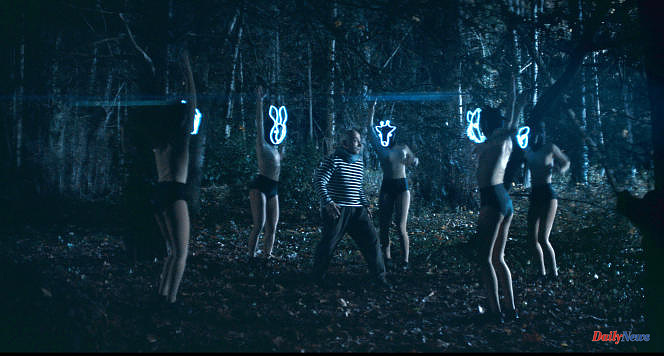Celebrating the fifty years of the death of Pablo Picasso (1881-1973) by dancing, who says better... The artist in love with movements, breaker of lines and rhythms, regularly painted the world of circus and dance but also signed a number of sets, costumes and stage curtains. Accomplice in the creation of the Ballets Russes company (from 1916 to 1921), where he met the dancer Olga Khokhlova whom he married in 1918, he tattooed in his inimitable style the cubist and discordant Parade (1917), the most realistic Tricorne (1919) or Pulcinella (1920) where he revisits Neapolitan traditions.
Initiated by Arte, this collection of eight short films imagined by eight choreographers can be savored like a farandole of singular flavors, none of which knocks out the other. The principle of the game is simple while allowing you to ramble happily. Each has chosen a work to support their imagination and their vision of Picasso. Freedom of interpretation is at the rendezvous in these vignettes, sometimes very danced, sometimes theatrical, and illuminates this mosaic portrait of the painter where his passion for women, his twist of reality, his chromatic subtlety intersect.
question of the feminine
The question of the feminine electrifies four films. Inspired by Dora Maar with Green Nails (1936), Polish Anna Hop delivers a suggestive fiction titled The Fall of Dora Maar. Evoking the violent relationship between Maar and Picasso, she plays a heroine under the influence manipulated by three men who slowly trap her in a suffocating trap. Darker, Olivier Dubois' proposal for This Obscure Love of Desire refers to Dora and the Minotaur (1936). Against the backdrop of the impressive walls of skeletons and skulls of the catacombs of Paris, he leads us running through a labyrinth flashed with spectral apparitions.
The biting and sensual embrace of Dubois becomes acrobatic intertwining with Carla Cervantes and Sandra Egido for Together, our bodies have never been only bodies, under the influence of the canvas Three Women (1908). Between sea exterior and apartment interior, the duo unrolls a fluid score that reconfigures the anatomy to the point of confusion. As for Leïla Ka in Vivantes, a trio conceived as a mirror image of the painting Les Deux Sœurs or L'Entrevue (1902), she digs into her obsession with layers of clothing and, in particular, little floral dresses by undressing under high tension.
The charm of this series also lies in the walk to which it invites. From the angular architecture of Maxxi, Rome's contemporary art museum, to Diego Tortelli's Parade, to the studio-workshop of actor and illustrator Mr. Kriss in The Acrobat and the Guitarist, each film s embedded in a cocoon of beauty. A dark forest welcomes Picasso's Tom Thumb struggling with his muses in La Visite, by Angelin Preljocaj, while the Senegalese bush envelops Nora Chipaumire for Not Waiting. With Germaine Acogny, they stand in front of a baobab tree and recall in hieratic poses Picasso's fascination with the African masks found in Les Demoiselles d'Avignon (1907). The flexible and precise camera of Thibaut Charlut, which plays close-ups on the bodies with accuracy, halos this Picasso Dance with elegance.












